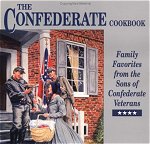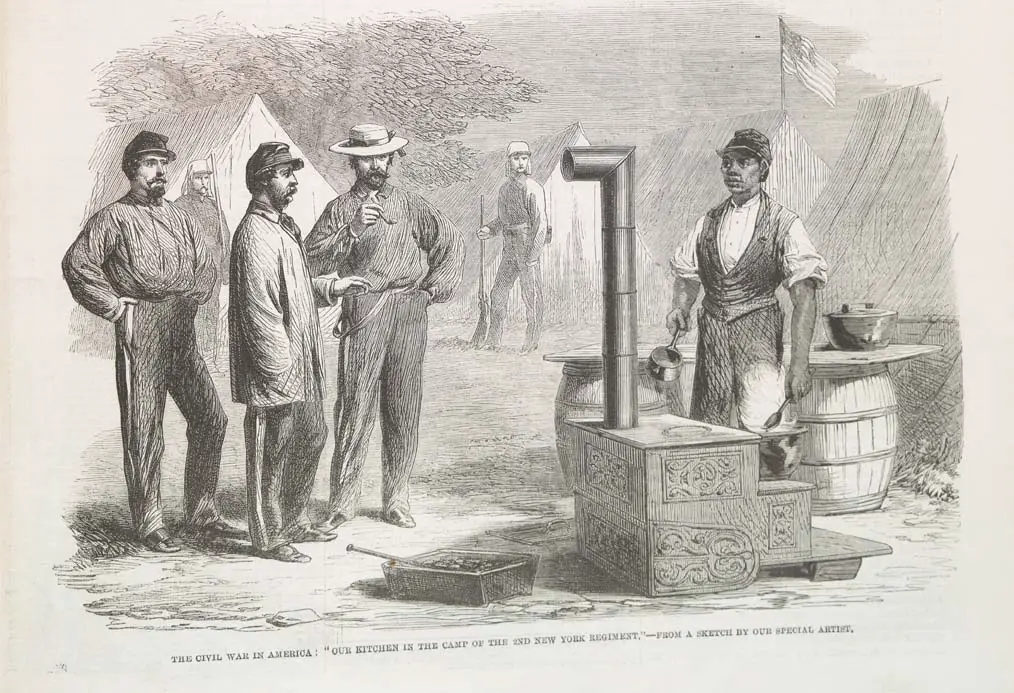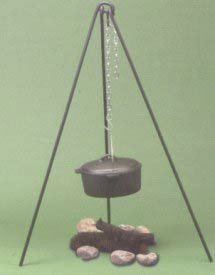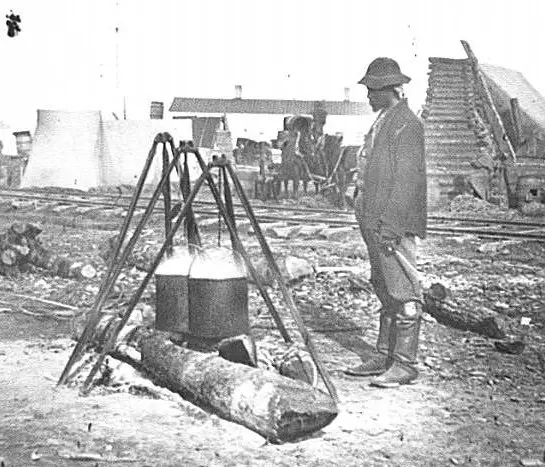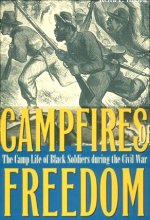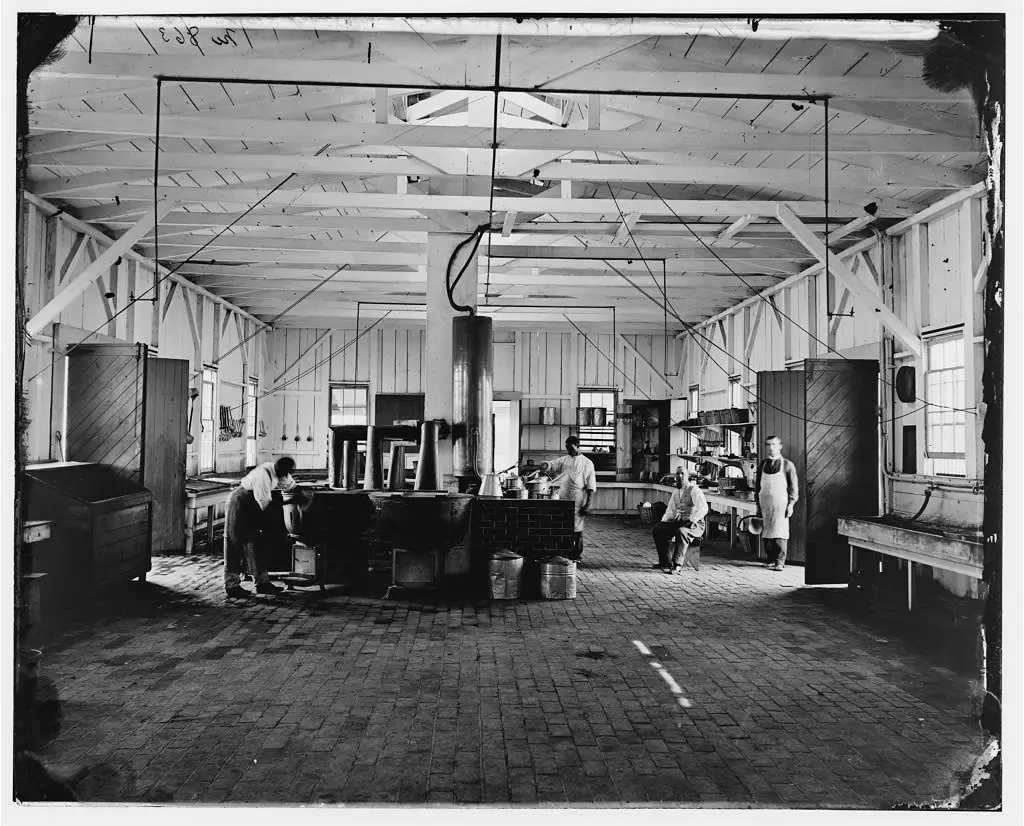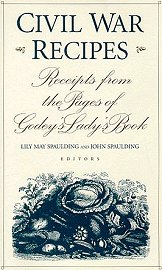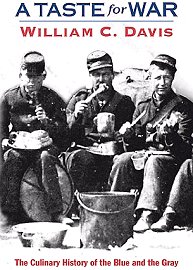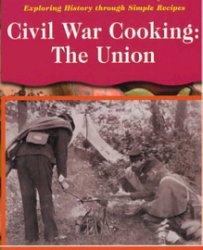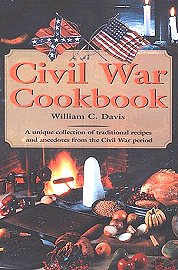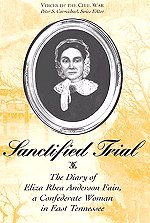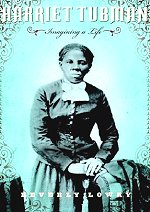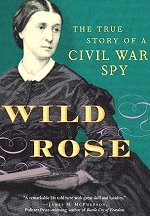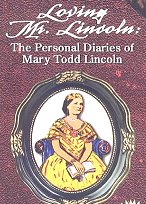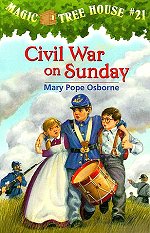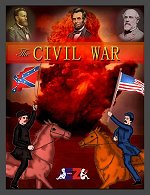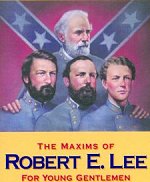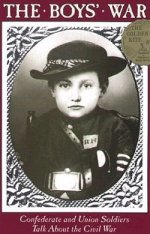|
|
| The daily allowance of food issued to soldiers was called rations . Everything was given out uncooked so the soldiers were left up to their own ingenuity to prepare their meals. Small groups would often gather together to cook and share their rations and they called the group a "mess" , referring to each other as "messmates" . Others prided themselves in their individual taste and prepared their meals alone. If a march was imminent, the men would cook everything at once and store it in their haversack , a canvas bag made with a sling to hang over the shoulder. Haversacks had a inner cloth bag that could be removed and washed, though it did not prevent the bag from becoming a greasy, foul-smelling container after several weeks of use. The soldier's diet was very simple- meat, coffee, sugar, and a dried biscuit called hardtack . Of all the items soldiers received, it was this hard bread that they remembered and joked about the most. |
Union Hardtack
Hardtack was a biscuit made of flour with other simple ingredients, and issued to Union soldiers throughout the war. Hardtack crackers made up a large portion of a soldier's daily ration. It was square or sometimes rectangular in shape with small holes baked into it, similar to a large soda cracker. Large factories in the north baked hundreds of hardtack crackers every day, packed them in wooden crates and shipped them out by wagon or rail. If the hardtack was received soon after leaving the factory, they were quite tasty and satisfying. Usually, the hardtack did not get to the soldiers until months after it had been made. By that time, they were very hard, so hard that soldiers called them "tooth dullers" and "sheet iron crackers" . Sometimes they were infested with small bugs the soldiers called weevils, so they referred to the hardtack as "worm castles" because of the many holes bored through the crackers by these pests. The wooden crates were stacked outside of tents and warehouses until it was time to issue them. Soldiers were usually allowed six to eight crackers for a three-day ration. There were a number of ways to eat them- plain or prepared with other ration items. Soldiers would crumble them into coffee or soften them in water and fry the hardtack with some bacon grease. One favorite soldier dish was salted pork fried with hardtack crumbled into the mixture. Soldiers called this "skillygallee" , and it was a common and easily prepared meal. |
 |
Union Hardtack Recipe |
Mix the ingredients together into a stiff batter, knead several times, and spread the dough out flat to a thickness of 1/2 inch on a non-greased cookie sheet. Bake for one-half an hour at 400 degrees. Remove from oven, cut dough into 3-inch squares, and punch four rows of holes, four holes per row into the dough. Turn dough over, return to the oven and bake another one-half hour. Turn oven off and leave the door closed. Leave the hardtack in the oven until cool. Remove and enjoy! | Supplies Unbleached Flour Cookie Sheet |
Confederate Johnnie Cake Recipe |
Mix ingredients into a stiff batter and form eight biscuit-sized "dodgers". Bake on a lightly greased sheet at 350 degrees for twenty to twenty five minutes or until brown. Or, spoon the batter into hot cooking oil in a frying pan over a low flame. Remove the corn dodgers and let cool on a paper towel, spread with a little butter or molasses, and you have a real southern treat! | Supplies Corn Meal Condensed Milk Iron Frying Pan Unbleached Flour Cookie Sheet |
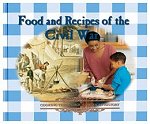 Food and Recipes of the Civil War Describes some of the foods eaten in the North and South before and after the Civil War and the impact of the war on what foods were available and how they were prepared. Includes recipes. |
 A Woman of Honor: Dr. Walker and the Civil War A picture of Mary Walker that allows us to see the furrows in her brow as she continued to stubbornly stick to her values. This book is eye-opening and brings to the forefront many women's rights issues that we may not even be aware of. |
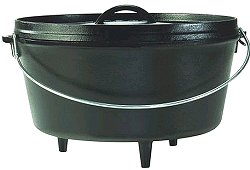 Lodge Camp Dutch Oven The legs are for ease of use in campfires. Flanged lid to place coals on top of oven. Great for stews, chilli, roasts complete recipes for everything including old-fashioned bread. A must for reenactors villages. |
Some of the other items that soldiers received were salt pork, fresh or salted beef, coffee, sugar, salt, vinegar, dried fruit and dried vegetables. If the meat was poorly preserved, the soldiers would refer to it as "salt horse". Sometimes they would receive fresh vegetables such as carrots, onions, turnips and potatoes. Confederate soldiers did not have as much variety in their rations as Union soldiers did. They usually received bacon and corn meal, tea, sugar or molasses, and fresh vegetables when they were available. While Union soldiers had their "skillygallee", Confederates had their own version of a quick dish on the march. Bacon was cooked in a frying pan with some water and corn meal added to make a thick, brown gravy similar in consistency to oatmeal. The soldiers called it "coosh" and though it does not sound too appetizing, it was a filling meal and easy to fix. |
|

